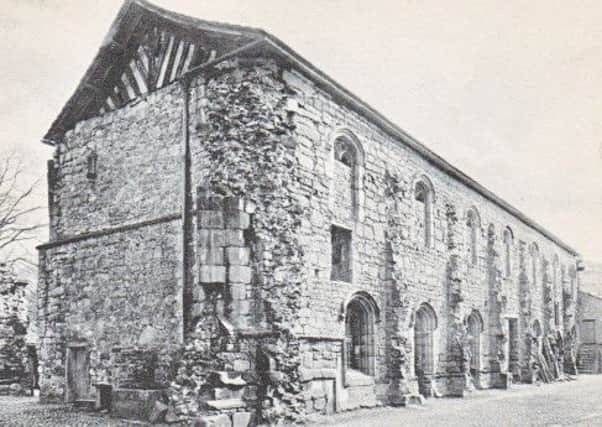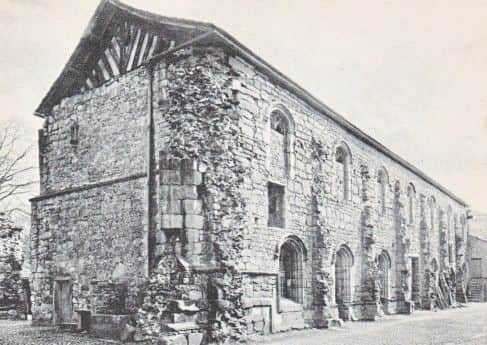Whalley Abbey: well worth a visit this summer


I have come to the conclusion, therefore, that I will recommend a few relatively local places you might want to visit.
I started a week or so ago with a suggestion that you visit Wycoller. You will recall I did not recommend a route to the village and neither did I outline a conducted tour. However, I did indicate where the car park was and that there were a few facilities for visitors.
Advertisement
Hide AdAdvertisement
Hide AdThe destination, this week, is Whalley but I am not recommending you visit the village. This time the object of our attention is Whalley Abbey, to my mind just about the most important historic site in East Lancashire.


It does not matter to me that Whalley is in the Borough of Ribble Valley. Historically, Whalley, and its abbey, are very firmly in Lancashire’s Calderdale. Whalley shares the same river as we do in Burnley and it is some distance beyond Whalley that the Calder flows into the Ribble.
In fact, I have always regarded Whalley as having more in common with Burnley than Clitheroe. This is, of course, as a result of taking the historical perspective. From at least 1170 AD, to the middle of the 19th Century, Burnley and Whalley were inextricably linked in that they were within the same ecclesiastical parish. This was in the days when the Church counted for much more than it does now and the links between the two towns were correspondingly greater than might otherwise be thought to be the case.
Similarly, the Towneleys, Burnley’s leading historic family, although their surname derives from their Burnley estates, the family’s origins can be found in Whalley. Before they came to Burnley, in the 12th Century, they were Hereditary Deans of Whalley. The Deans were not priests but were responsible for the administration of the huge parish of which Whalley was centre.
Advertisement
Hide AdAdvertisement
Hide AdThe Towneleys kept up their association with Whalley for many years after they succeeded to their Burnley lands and had it not been for Sir John Towneley, who might be regarded as a Burnley man, one of the great treasures of Whalley might have been lost for ever.
I refer to the magnificent 15th Century altar vestments which you will not find in Whalley. They are now on display at Towneley Hall and are one of the greatest treasures of the council tax payers of Burnley.
I do not want to be controversial but, when I was Mayor of Burnley, a number of residents of Ribble Valley were not all that complimentary about our town. I responded with the rejoinder that Burnley was light years ahead of Ribble Valley in matters of culture. I was not referring to Burnley’s famous Blues Festival but to the fact Ribble Valley has not got anything like Towneley Hall, which combines the features of an excellent museum with those of a first rate art gallery and a local history museum, all in one building.
In addition we have got the Mechanics, Gawthorpe and Queen Street. Ribble Valley can’t compete with these though a recent drive through the Trough of Bowland reminded me that Ribble Valley has some splendid assets.
Advertisement
Hide AdAdvertisement
Hide AdOf course, I would have to concede that, in partnership with the county council, Ribble Valley does have the castle at Clitheroe which, since I was Mayor, has been brought up to standard.
I mention this because Ribble Valley Borough Council has never thought it worthwhile to invest in a museum, or better still, a heritage centre for Whalley.
The village has a great history and much of it, as is the case with Burnley, is still there for us to see. This might be regarded as an argument for doing nothing but similar places in other parts of the country have managed to avail themselves of such facilities much to the advantage of visitors and towns people alike.
The nearest facilities in Whalley to a heritage centre are the ancient parish church and the ruins of Whalley Abbey and there have been plans for a heritage centre in the past. The sad thing is that the establishment of such a facility in the village has been left to the local churches, a task which probably needs wider commitment than they can offer.
Advertisement
Hide AdAdvertisement
Hide AdWhalley Abbey was founded in the late 13th Century. This was very late for the establishment of a Cistercian house many of which, like nearby Sawley, had been founded in the early or mid 12th Century. The actual foundation date is 1296, the date the monks moved to Whalley from their original home at Stanlaw, Cheshire.
Stanlaw Abbey had been founded in 1178 by John FitzRichard, sixth Baron Halton. The abbey was built in an exposed position on the estuary of the river Mersey. In 1279 the site was flooded and, eight years later, the building was stuck by lightening. The tower collapsed and part of the abbey was destroyed by fire.
The monks resolved to find another site and approached the then Baron Halton, who was none other than Henry de Lacy, Earl of Lincoln, who we have met quite frequently in the pages of “Retro” and “Peek into the Past”.
The earl was one of Edward I’s principal advisers and recommended the site at Whalley which was near his castle of Clitheroe.
Advertisement
Hide AdAdvertisement
Hide AdThere were, though, a few problems to sort out before anything could be done. The first was that the Whalley site was occupied by Peter de Cestria, a relative of the earl, who refused to move. Peter defied the earl for some years and lived on into very old age at his property, an Oratory, otherwise known as the de Cestria Chapel, the remains of which can still be seen at the present abbey.
The first picture, which comes from a postcard post marked August, 1908, shows Peter’s oratory. You can see it on the left of the image. Notice the Early English window on the upper floor of the building though much of what is a rebuild of the former Abbot’s Lodging is covered in what appears to be ivy.
Those of you who know Whalley Abbey might not be familiar with this picture as this part of the abbey is not as well known as it should be. The front elevation of Abbot’s Lodging, which I have included in another image, is much better known. However, look around the corner and you will see the remains of the oldest building on site, the Oratory.
I said there were several problems about the move to Whalley. Peter caused considerable difficulties but there was another. At the time Peter died, and the monks had taken possession of his oratory, Edward I was fighting his famous war against Scotland. The king was to enjoy a number of famous victories but, in 1307, he died and his son Edward II came to the throne.
Advertisement
Hide AdAdvertisement
Hide AdThe younger Edward was not the king his father had been and soon English armies were being defeated by the Scots. The latter, seeing the weakness of the English king, decided to invade his territories and the result was that it was not long before Scottish armies were encamped in the Ribble Valley.
It was at this time that Samlesbury Hall, then situated nearer the Ribble than it it is now, was attacked and destroyed. The consequence, at Whalley, was that the monks decided to defend their abbey with stout walls. All of these have now gone but the Western Gateway is a reminder of these days.
Another thing to bear in mind is that Whalley Abbey was built in the then fashionable Early English style of architecture. This can still be seen in what remains of the building but it is time we had a look at the Abbey. Before I do that let me tell you there are no real parking problems near the abbey and it has a splendid little tea shop.